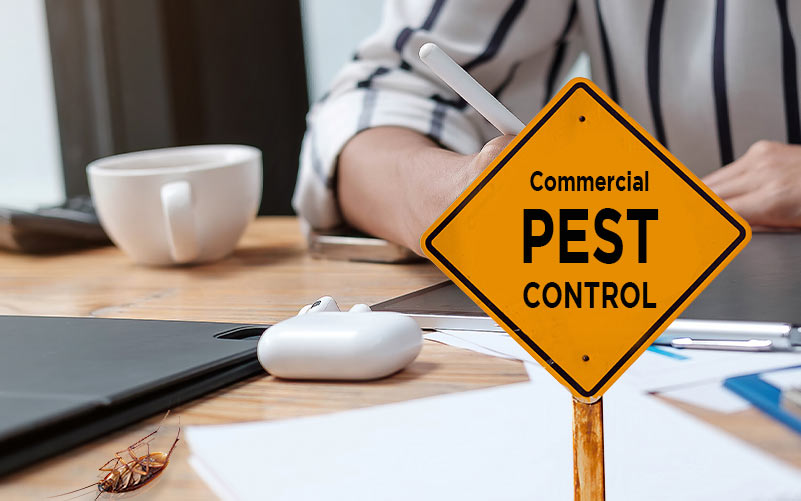High Quality A1 Pest Control Services Charlotte - Secure Your Home
High Quality A1 Pest Control Services Charlotte - Secure Your Home
Blog Article
Bed Insect Treatment Break Down: Contrasting Chemical Vs. Non-Chemical Solutions
In the world of parasite control, especially when managing the relentless concern of bed pests, the option in between chemical and non-chemical treatment remedies can be a pivotal one. Both approaches supply distinct benefits and downsides, influencing elements such as efficiency, safety and security considerations, and general price. By taking a look at the nuanced details of each approach, a more clear understanding of which course to seek in addressing a bed insect infestation can be attained.
Efficiency of Chemical Treatments
Chemical therapies for bed bug problems have actually been widely acknowledged for their powerful and quick effectiveness in eradicating these insects. When taking into consideration the effectiveness of chemical treatments, it is critical to understand that they can offer a fast and comprehensive remedy to a bed insect trouble. Expert pest control operators frequently rely upon pesticides to target bed bugs at different phases of their life cycle, consisting of eggs, adults, and fairies. These chemicals usually work by interrupting the bed insects' nerves, leading to paralysis and ultimate death.
Furthermore, chemical treatments have the advantage of using residual impacts, implying that they can proceed to get rid of bed bugs also after the first application. This recurring action is specifically beneficial in combating any kind of possible re-infestations. Furthermore, the rapid action of chemical therapies can bring alleviation to people facing serious bed insect invasions, permitting them to restore control of their living rooms rapidly.
Safety And Security Worry About Chemical Solutions
One vital element that needs careful factor to consider when utilizing chemical solutions for bed insect therapy is making sure the security of owners and the atmosphere. Direct exposure to certain chemicals utilized in bed insect treatments can lead to breathing concerns, skin irritation, or other unfavorable responses, particularly in people with pre-existing conditions or level of sensitivities.
Furthermore, the ecological effect of chemical remedies is one more significant factor to consider. Some pesticides utilized in bed bug therapies may be damaging to useful insects, wild animals, and ecosystems if they seep right into the dirt or water supply. It is important to use chemical treatments deliberately, complying with safety and security standards, and thinking about much less toxic alternatives to alleviate these threats and ensure the risk-free and reliable management of bed insect problems.
Benefits of Non-Chemical Approaches
Thinking about the prospective security problems and environmental effect linked with chemical remedies for bed insect treatment, exploring non-chemical approaches offers an encouraging choice with numerous unique advantages. Non-chemical therapies are environmentally friendly, look here as they do not contribute to air or water pollution, making them a sustainable selection for parasite control.
Additionally, non-chemical services can be effective in targeting bed bugs, including hard-to-reach areas where chemical treatments may not permeate. Methods such as heat treatment, vacuuming, heavy steam cleansing, and bed mattress coverings provide thorough elimination without using hazardous chemicals. In addition, non-chemical methods can be less disruptive, requiring very little prep work and permitting quicker reentry right into dealt with locations. Overall, choosing non-chemical bed bug therapy methods not only focuses on safety and security and ecological defense yet additionally guarantees detailed and efficient insect control.
Limitations of Non-Chemical Treatments

Additionally, non-chemical therapies commonly require several applications to accomplish effective obliteration. This can be lengthy and might not always ensure complete removal of all bed bugs and their eggs, especially in hard-to-reach or concealed areas.
Additionally, the success of non-chemical this post treatments heavily depends on proper execution and thoroughness, which can be challenging for individuals without professional know-how. Inadequate application of non-chemical approaches might lead to insufficient removal, causing persistent problems and the requirement for additional treatments.
As a result, while non-chemical therapies have their advantages, it is necessary to recognize these limitations and consider them when figuring out one of the most effective method for taking read more care of bed insect infestations.
Expense Comparison: Chemical Vs. Non-Chemical Options
Offered the limitations connected with non-chemical therapies, a crucial facet to review in the context of bed insect management is the expense comparison in between chemical and non-chemical options. In contrast, non-chemical treatments like warm treatment or heavy steam can be more expensive, with expenses varying from $1,000 to $6,000 for an entire home. While the first expense of chemical therapies might appear reduced, several therapies may be called for to fully eliminate the invasion, possibly enhancing the overall cost.
Conclusion

Thinking about the prospective safety and security issues and environmental effect associated with chemical services for bed pest treatment, checking out non-chemical methods offers a promising alternative with a number of distinct benefits.Given the limitations associated with non-chemical therapies, a crucial facet to evaluate in the context of bed insect administration is the expense contrast in between chemical and non-chemical alternatives. In comparison, non-chemical treatments like warm therapy or heavy steam can be a lot more costly, with expenses varying from $1,000 to $6,000 for an entire home. While the initial cost of chemical treatments may seem lower, multiple therapies might be needed to fully remove the problem, potentially raising the general expense.In verdict, when comparing chemical and non-chemical bed bug therapy choices, it is important to consider performance, safety and security, benefits, restrictions, and cost.
Report this page